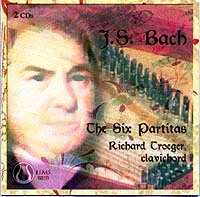This British Clavichord Society afternoon recital of 18th century music filled the venerable Art Worker' Guild in Queen Square, a good venue for this quietest instrument, disturbed only by an occasional passing aeroplane. You have to really concentrate, but it is rewarding and brings quite a different perspective and dimension to concert going. Andreas Erisman is a member of the Camerata Bern and he teaches in Berne. A very accomplished and fluent clavichordist, he brought a warm tone to his recital of rare music from mid- and later eighteenth century - music that most present will not have known - on a Fuchs copy of a Hubert/Tannenberg instrument, all.
It was regrettable that no programme notes were prepared. Giovanni Battista Grazioli (1746-1820) was an organist at St Mark's, Venice who composed sacred music, and twelve piano sonatas which are described in New Grove as being formulaic, all in major keys, the three movements fast-slow-fast 'with persistent use of the Alberti bass'. Hearing one of them did not suggest that the composer had the special qualities of the clavichord in mind. Joseph Antonin Stepan gets a strong entry, suggesting that he was important in the development of piano music in the period. Two of his rather long, four movement, sonatas from the 1770s were, perhaps, one too many; they are pleasing but did not sound all that innovative. Again, there is no mention of the clavichord in New Grove's article.
All repeats were given, it appeared without significant embellishment, making it a long afternoon, but opportunities to hear the clavichord played expertly are few and far between, so one ought not to complain at hearing twice music one might never hear again!
As so often, Carl Philipp Emanuel stole the show, with two fanciful and flamboyant sonatas that were entirely idiomatic for the instrument, rivetting attention and leaving you continually guessing what is coming next. The A minor Wq 57/2 of 1781 brought the proceedings to an exhilarating conclusion.
Clavichord CDs
With modern recording, the clavichord sounds well on CD, provided you keep the volume well down. A recent release, greatly to be welcomed, is the first recording on clavichord of J S Bach's Six Partitas, a formidable undertaking, despatched with great conviction by Richard Troeger of Boston on a well filled double CD from Lyrichord. Troeger's Haas instrument (modelled on those of Silbermann) has a beautiful tone, and combines clarity for disentangling part writing with the incisiveness of the harpsichord, and a surprisingly wide dynamic range, without resort to registrations.
Quoting the review by Paul Simmonds, Editor of the BCS Newsletter:
' - - the instrument was well suited in tone to this music. The registers are well characterized, but no single register dominates. This lends the contrapuntal movements a wonderful clarity. Richard Troeger has clearly lived with the music and performed it on this instrument for many years, and is in full control of every nuance of which the clavichord is capable. Dynamics are particularly well handled, with unimportant figuration feathered away. - - - Most movements have repeats, and I enjoy Troeger's embellishments of the second time round; they may have been carefully worked out, but they sound spontaneous.'
Recommended enthusiastically as an antidote to the recent proliferation of Bach performances and recordings on modern piano, often with dubious interpretative concepts. Do try it (Bach Six Partitas Lyrichord LEMS 8038 [72+70 mins] Amazon US *****): www.lyrichord.com
For future clavichord events, visit the British Clavichord Society's website: www.bcs.nildram.co.uk
Peter Grahame Woolf

 Return to:
Return to: